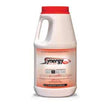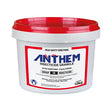Bindii control - Prickle FREE lawn this summer
Bow & Arrow - 500ml small pack
Product & Pack
- Application Rate is 50 mL per 100 square metres
- 500 mL pack treats 1,000 square metres in total [$0.06 cents (6 cents) per square metre]
- Be sure to READ and FOLLOW the product label in FULL before using.

If you want a perfect lawn that you can walk on without all the painful Bindii prickles, then you need to spray in winter or early spring before the bindi flowers.
Winter is a time when many nuisance weeds and prickles tend to invade our home turf. One such major nuisance weed is the Bindii.
If you have ever walked on a bindii and felt the sharp pain they cause, this is actually the seed that has the prickles. Bindies grow in the winter and set seed late winter to early spring.
Bindii weed, onehunga (pronounced oh-nee-hunga after a New Zealand Maori place name) and jo-jo are alternative names for a troublesome lawn weed (Soliva pterosperma) which is now widespread throughout Australia.
How to Control Bindi
Bindii grows in the Winter and go to seed in early Spring. The best time to target Bindii is in Winter before it produces the seed pod and spreads throughout your lawn.
The best way to keep on top of Bindii is through prevention by regularly fertilising and watering. This will help your lawn become healthier and less susceptible to the infiltration of weeds. Raising your lawn mower height is particularly important in winter and will help you to avoid scalping of your grass. Scalping will also make your lawn more susceptible to weed invasion. When weeds do occur, it is important to take action early. That way you can get on top of them before they are more difficult to manage.
Manual removal

If bindii plants are to be removed manually the root needs to be dug up to avoid regrowth. This can be a very tedious process in a badly infested lawn.
It is also difficult to spot all plants in the lawn so manual removal is more likely to be successful with small infestations.
Chemical treatment
The most effective control method for bindii weed is to blanket-spray all the affected lawn with selective herbicides.
Timing is critical to control bindi - winter is ideal or very early spring at the latest
Bindii can be sprayed from mid-June onwards. Immature plants are easier to kill, however, it is necessary to delay spraying until a full emergence has appeared.

The trick to stopping Bindies from spreading is to spray them in winter / early spring as soon as you see them, before the prickles develop, and continue to repeat spray every 3 weeks until they are all gone. Repeat spraying is important as this will control weeds that germinate after the prior spraying.
The product we recommend to use on Bindii as well as many other weeds is for less than 1000sqm plots of land is: Bow & Arrow Selective Herbicide SOLD as a 500ml pack.
Active Constituents:
20 g/L CLOPYRALID present as the potassium salt
15 g/L DIFLUFENICAN
300 g/L MCPA present as the potassium salt
Weeds Controlled
White Clover (Trifolium repens),
Plantain (Plantago lanceolata),
Capeweed (Arctotheca calendula),
Cat’s ear (Hypochoeris radicata),
Bindii (Jo-Jo, Onehunga) (Soliva sessilis),
Cudweed (Gnaphalium spp.),
Creeping oxalis (Oxalis corniculata)
Application rate
50ml in 2 - 5L of water per 100 sqm
Critical comments
Apply to actively growing weeds. Transient discolouration may occur on kikuyu and carpet grass and Queensland blue couch. Varietal differences in certain buffalo grasses may produce more pronounced effects and it is recommended that small areas be tested for turf safety before large-scale application occurs. Avoid exceeding application rates through overlapping sprayed areas. Use a surfactant for difficult to wet weeds.
Avoid spray drift
Take care to avoid spray drifting onto garden plants, especially roses, pome and stone fruit, and grape vines. These are very sensitive to the MCPA component of the products and, even if they do not suffer permanent damage, the chemical contact will produce unsightly twisted leaves. If some accidental spray drift does occur, its effects can be reduced if the plant’s leaves are immediately hosed off with water.



















 Chat with Us
Chat with Us
